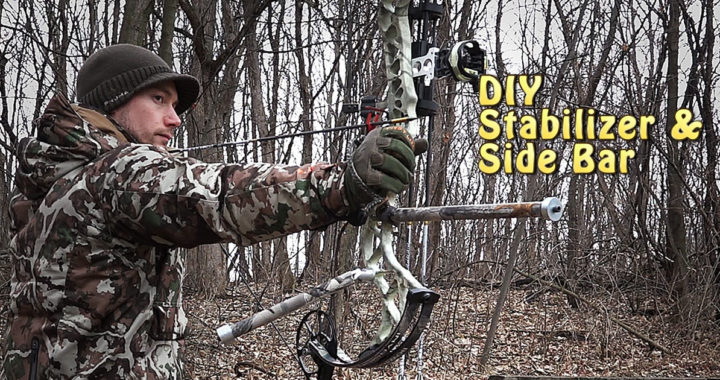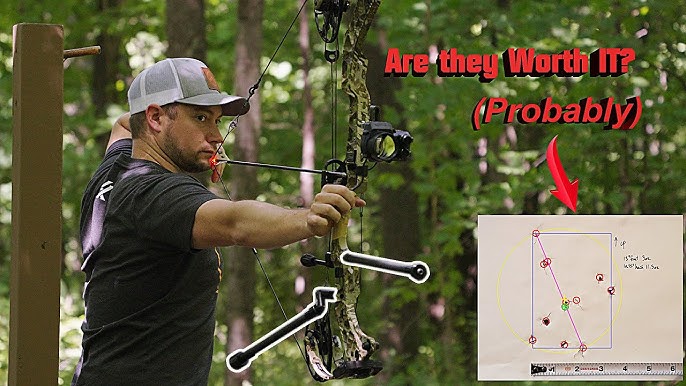Optimizing Your Archery Efficiency With the Right Compound Bow Stabilizer: a Thorough Review
One often-overlooked yet crucial component in improving precision is the compound bow stabilizer. By recognizing the nuances of selecting and maximizing a compound bow stabilizer, archers can adjust their equipment to boost their shooting experience to brand-new degrees of efficiency and control.
Importance of Bow Stabilizers in Archery

Additionally, bow stabilizers assist in balancing the weight distribution of the bow, which can boost the archer's stability while intending and firing. By adding weight to the front of the bow, stabilizers can minimize the quantity of torque experienced upon release, causing a smoother and much more regulated shot - compound bow stabilizer. This weight distribution also helps in holding the bow constant for a longer duration, allowing the archer to aim a lot more accurately
Types of Substance Bow Stabilizers
When taking into consideration the numerous kinds of compound bow stabilizers offered, it is vital to comprehend their distinct features and features to figure out the most appropriate option for taking full advantage of archery performance. The most common kinds of compound bow stabilizers include sidebar stabilizers, front stabilizers, and back stabilizers. Back stabilizers, additionally called rear stabilizers, are mounted to the back of the bow and aid in counteracting the weight of other devices, resulting in boosted stability and steady intending.
Aspects to Think About When Choosing
In reviewing substance bow stabilizers, understanding the distinct features and functions of each type is essential for making an educated decision on the most appropriate option to improve archery performance. When selecting a stabilizer, one have to consider the weight of the stabilizer itself. By carefully assessing these elements, archers can select a compound bow stabilizer that straightens with their shooting design and optimizes their overall efficiency on the archery array.
Installment and Modification Tips
For ideal performance and accuracy in archery, understanding the installment and modification of your bow stabilizer is vital. Appropriate installation starts with connecting the stabilizer to the bow's riser, ensuring it is firmly safeguarded. A lot of stabilizers include mounting equipment for simple installation, but it's crucial to adhere to the maker's guidelines for the details version you have. Once attached, changing the stabilizer involves locating the ideal balance in between weight circulation and length. Trying out various combinations till you achieve the wanted feeling and stability.
When changing the stabilizer, begin with small step-by-step changes instead than drastic changes. This allows you to examine the impact of each adjustment accurately. Take notice of exactly how the bow reacts to adjustments in stabilizer settings and make modifications accordingly. Bear in mind that the objective is to discover a setup that decreases hand torque, decreases resonance, and boosts accuracy. Routinely examine the stabilizer's tightness and general problem to guarantee it continues to work ideally. By mastering the setup and modification procedure, you can maximize your archery performance and elevate your shooting look at here now experience.
Maintenance and Care Guidelines

It is additionally vital to store your bow with the stabilizer in a safe and protected place when not in use. Stay clear of leaving it in severe temperature levels or subjected to guide sunlight for extended durations, as this can create damages to the stabilizer. Occasionally inspect the stabilizer's positioning to ensure it is still properly placed on your bow. Adhering to these upkeep and care standards will certainly help you get the most out useful link of your bow stabilizer and enhance your general archery performance.
Conclusion
To conclude, selecting the right substance bow stabilizer is important for making best use of archery performance. Comprehending the importance, types, variables to consider, installment and modification pointers, in addition to upkeep and care standards can significantly influence one's accuracy and uniformity in capturing. By selecting a stabilizer that matches individual requirements and choices, archers can enhance their general efficiency and accomplish far better results on the variety or in competitors.
Bow stabilizers play a critical role in improving an archer's precision and consistency by minimizing vibrations and stabilizing the bow throughout the launch of an arrow - compound bow stabilizer.Additionally, bow stabilizers assist in stabilizing the weight distribution of the bow, which can enhance the archer's security while intending and shooting. The most typical kinds of compound bow stabilizers include sidebar stabilizers, front stabilizers, and back stabilizers. Back stabilizers, likewise called back stabilizers, are placed to the back of the bow and assist in reversing the weight of various other devices, resulting in improved stability and stable intending. When selecting a stabilizer, one have to consider the weight of the Learn More stabilizer itself